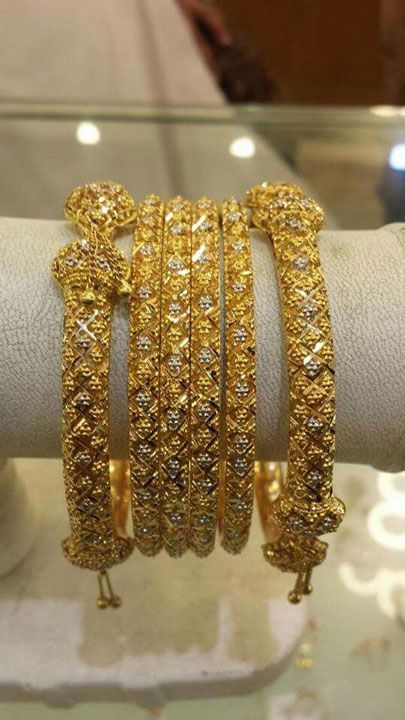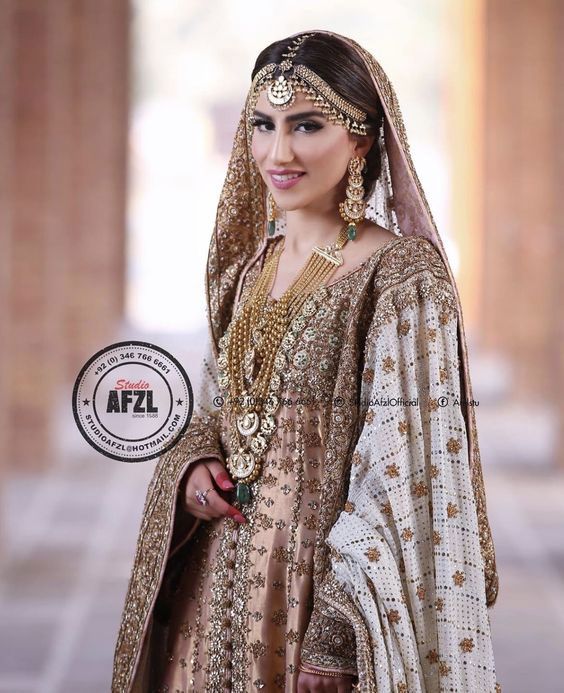Jewelry is a form of art that derives its idea of nature as an ornament, being man’s earliest attempt towards developing a sense of aesthetics and achieving physical beauty. The craft provides a wide range of designs including patterns, size and colour.
Jewelry has taken upon religious and ritualistic iconography as the art of the craft proves to be especially significant in South Asian culture, especially during events like weddings. These are also heavily incorporated in Lollywood and Bollywood as a symbol of art for countries such as Pakistan and India. Gold is especially important to symbolize the subcontinental culture.
The ornaments are made of precious metals such as gold and silver, with a direction moving towards diamonds in the contemporary world. Before the discovery of such metals, jewelry in ancient times was made of stone beads, wood, ivory, flowers, leaves and claws—natural materials. The art of adornment travels back to the primitive man who used such materials for decoration.

Jewelry enhances one’s beauty and becomes a symbol of status, power and wealth. Jewelry made with gold and diamonds echoes the impossibility for poverty-stricken families to afford glamorous jewels. While for many it is a symbol of wealth, for some it is a form of art in which they may express their creative individuality. It is thus used as a part of their culture and tradition, with the relevance and importance of the ornament differing. However, it is essential to note that all forms play a significant role.
For South Asian cultures, pieces of jewelry highlight a significant symbolic role in carrying out spiritual and ethnic meaning, especially during wedding events.
Bridal jewelry holds high value while the bride becomes a part of another family. Perhaps, one may say that with such significance, it has become a nuisance, as the piece of ornament holds more value than the bride herself. The more gold she brings, the more value she holds, ironically as it is also a symbol of her dowry, much to the bride’s family’s dismay. The tradition is highly unethical and burdens the family, a practice that must end.
While the great significance of jewelry echoes the United Nations Sustainable Development Goals of Sustainable Cities and Communities, it also highlights the work yet to be done to achieve Reduced Inequalities and No Poverty as the majority of the people in Pakistan and India can barely afford a living let alone glamorous and precious jewels. When a community cannot afford the basic necessities of life, luxury items are not even a thought in their mind. It becomes a matter of survival with poverty at hand, as a common man earning less than the average income to afford food for the day does not step towards buying ornaments to be worn.
Along with this, gold jewelry has evoked the world’s fascination as its acceptance provides global value and a means of exchange—thus an investment for many. The most popular metal used to make jewelry in South Asia comprises gold, as it is highly durable and does not tarnish after everyday use.
Gold jewelry dates far back to 4000 BCE in Eastern Europe and 3000 BCE in Iraq. Associated with perfection, permanence, wisdom and divinity, the metal provides great strength, purity and cost. Along with this, silver is adorned. According to Indian culture, the ornaments signify many different meanings. While a necklace may highlight prosperity and protection, a nose ring symbolizes the coming of age of a woman when she is of marriageable age. However, in the 21st century, such notions are put aside as all sorts of jewelry including pendants, necklaces, bangles, rings and more are worn out of pure desire and fashion. Traditions have changed along with designs.
Overall, we see how jewelry plays a decisive role in culture, never losing its value, whether to make a statement or for an investment purpose. Artificial jewelry has also gained prominence in the 21st century as one cannot readily wear gold every day for fear of theft.

The importance of the South Asian craft presents itself as being used extensively in many areas such as financial, trading and religious purposes in many other cultures as well. Along with gold, silver, diamonds, platinum and gemstones (rubies, jade, lazuli, pearls) are also cultivated to bring about new designs in South Asian jewelry.
The significance of silver jewelry for Muslims lies in a silver ring worn by Prophet Muhammad (Peace be Upon Him). It is a symbolic piece to the Muslim faith and although the original ring was lost during the caliphate of Hazrat Usman (R.A), a replica is kept in the collection at Topkapi Palace in Istanbul, Turkey.
Therefore, we see the significance of South Asian Jewelry, the cultivation of gold, and many other materials that play a heavy role in their culture. As quoted by Garance Doré, a fashion illustrator and author, “Jewelry is a very personal thing, it should tell a story about the person who’s wearing it.”
View more jewelry pieces here.
